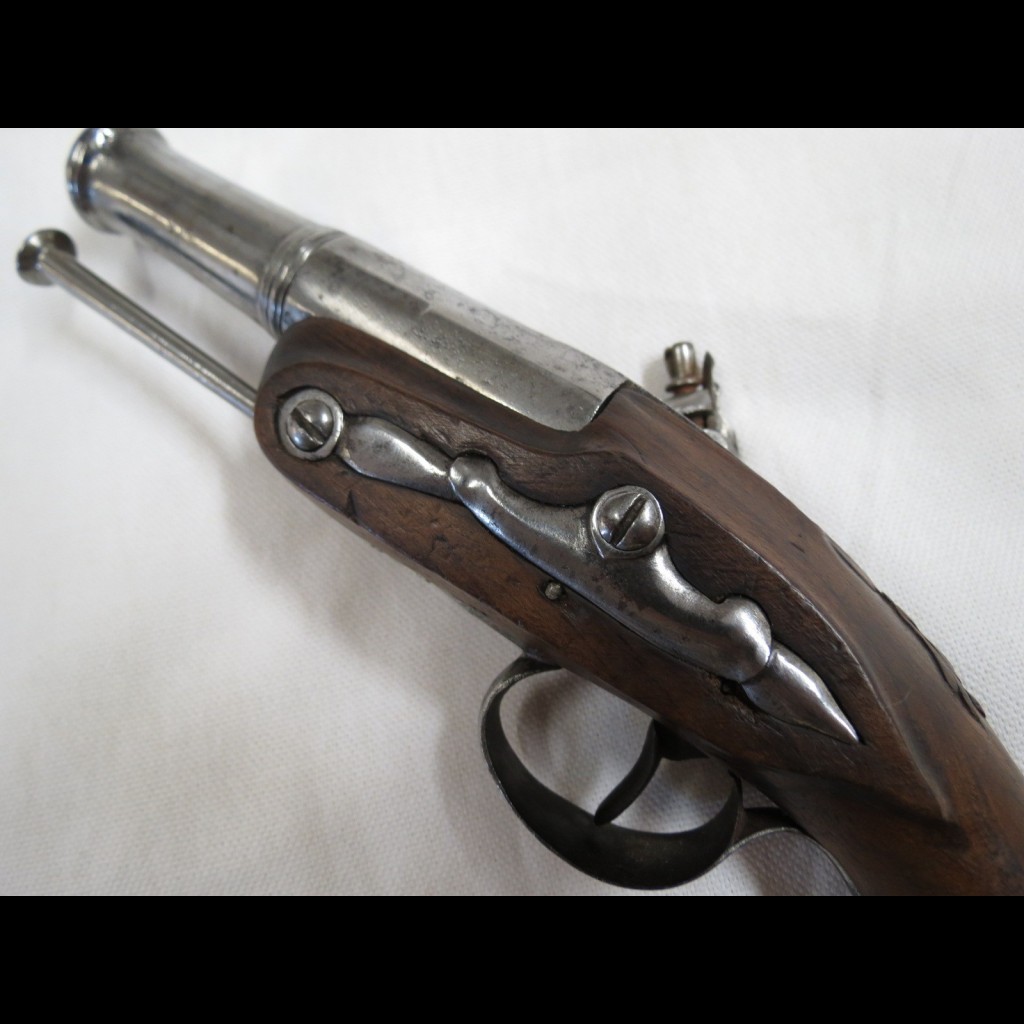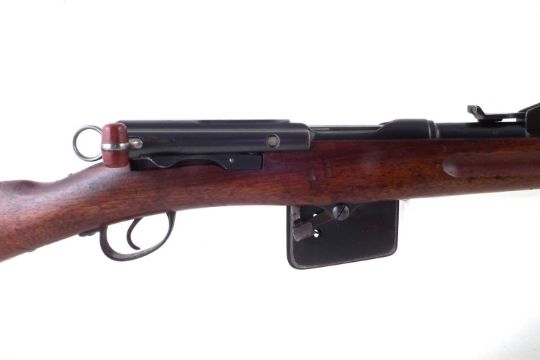Swiss Made Schmidt Rubin Model SR 1889 Rifle. Due to the early date of manufacture this is considered an Antique Firearm. The rifle pictured is representative of the rifle you will be getting. Overall in great condition. All serial numbers are matching.

- Schmidt Rubin model 1889 - £595.00 7.5x53.5 Schmidt Rubin model 1889 straight pull rifle Low serial numbers ( all matching)Very good bore and action These are very well made r View Full Details.
- Schmidt Rubin (Swiss) Model 1893 Carbines (serial # below 5000) Schmidt Rubin (Swiss) Rifles. Model 1889/96 or 96/11 (which were built on pre-existing 89/96 receivers) are pre-1899 if they have a serial number less than 236,500. Note: Only the 96/11 (and later models) are safe to use the high pressure M11 cartridge! Schmidt Rubin (Swiss) Model.
- Schmidt-Rubin G1911 7.5x55 Swiss Description: Built from improvements made to the original 1889, the G1911 from Schmidt-Rubin is a testament to Swiss manufacturing. Its unique straight pull bolt action makes these rifles stand out from the pack. Low serial number from first year of manufacturing in 1891.
Schmidt Rubin
Model 1889
7.5 x 53.5mm
Serial No: 108288
Date: 1892
Obsolete Calibre.
£550
This example is in Excellent Condition
Manufactured in 1891, matching numbers on the Bolt, Magazine & Action.
Excellent bore, comes with original sling, muzzle cap & magazine restrictor clip
Schmidt Rubin 1911 Serial Numbers
Serial No Range for 1892: (24901 - 115000)
Officially adopted in 1889, the Schmidt-Rubin Model 1889 was the result of several years of testing.
In 1882 Eduard Rubin began testing the first small-caliber copper-jacketed bullet which could successfully withstand high velocities.
In 1885, this round was combined with Rudolf Schmidt's first straight-pull action.
The straight-pull action relied upon an actuating rod, set in a channel to the right of the breech, to rotate the bolt though a
helical channel cut in the bolt sleeve. Twin locking lugs were positioned midway through the bolt sleeve, locking the bolt into the receiver
directly above the trigger.
Over the next three years both the rifle design and cartridge were refined. The final result was adopted on June 26, 1889.
The Model 1889 was chambered for the 7.5x53.5 round (GP90) with a 213 grain paper patched round producing
a velocity of 1935fps. The cartridges were held in a detachable magazine holding 12 rounds.
Production ceased in 1897, with approximately 211,890 rifles being produced.

********************
Terms & Conditions
Customers are advised that you must by law be 18 years of age or older to purchase deactivated weapons, swords, knives and bayonets from this website. Customers, who purchase any antique/obsolete firearms, cannot be a Prohibited Person under Section 21 of the 1968 Firearms Act as amended. By placing an order you are declaring that you are of legal age to do so, that you are not a Prohibited Person and that you accept the Conditions of Sale.
(Serial # 192 - Manufactured in 1891)
(Click PIC to Enlarge)
Calibre: ........................ 7.5 x 53.5 Swiss (GP90 & GP 90/03) See Note #2 below
.................................... 7.5 x 54.5 Swiss (GP90/23) See Note #2 below
Rifling & Twist: .............. 3-groove, RH, concentric rifling, 1 in 10.63
Barrel Length: ............... 30.7 in. (780mm)
Overall Length: ............. 51.25 in.(1302mm)
Weight: ........................ 10.69 lbs. (4.85kg) (empty)
Magazine Capacity: ....... 12 round detachable box magazine
Qty Mfg: ....................... ~212,000
Source: ....................... Swiss Magazine Loading Rifles, 1869 to 1958
................................... by Joe Poyer - ISBN: 1882391322
Canadian Collector Market Value Estimate: $
1891 Model 1889 Schmidt Rubin Infantry Rifle
(62 picture virtual tour)
 Observations:(Courtesy of Guisan - Copyright SwissRifles.com)
Observations:(Courtesy of Guisan - Copyright SwissRifles.com)This rifle was officially adopted on June 26, 1889. Tooling had already begun in the state factory, and so the first deliveries were surprisingly speedy. The M1889 was a most unusual design, with a characteristically Swiss nose cap/bayonet lug/stacking rod assembly, and a receiver with a noticeable gap between the trigger guard and the magazine. The great length of the bolt weakened the Schmidt system greatly. Production ceased in 1897 after 211,890 rifles and 40-50 drill rifles (Exerzierwaffen) had been delivered.
Collector's Comments and Feedback:
1. The rifle displayed in the virtual tour pictorial was manufactured in 1891 and is one of the first 200 rifles of this model ever built. It is all matching and is complete with the first model 1889 muzzle cover, correct for M1889 rifles within serial number range #1 to #19301. It's also mounted with the special removable clip to hold magazine lever in down position, often missing from these rifles.(Feedback by 'Badger')
2. CAUTION: DO NOT shoot the M1889 Schmidt-Rubin using standard 7.5 x 55 Swiss (GP11) military surplus ammunition. The chamber of the M1889 was not designed to handle the pressures generated by the more modern GP11 round. The Model 1889 action was designed to handle rounds that generated at most 39,000 psi, while GP11 rounds produce 45,500 psi. It is safe to fire modern 7.5 x 55 Swiss (GP11) rounds in Model 1896/11s, 1911s and K31s. If you wish to fire your M1889, you are going to have to reload your own cartridges. (Feedback by 'Badger')
Schmidt Rubin 1889 Serial Number
3. It is true that you should not fire GP-11 in a M1889, but the chamber isn't the reason. The concern is instability buckling failure of the bolt. In the Lg1889, the locking lugs are at the rear of the locking sleeve. The bolt assembly acts as long column with a wobbly joint in midspan. In the Lg1889/96, the lugs were moved to the front of the locking sleeve and made a little larger. This made the bolt 'column' significantly shorter and stabilized the back end, eliminating the 'wobbly joint'. The larger contact area of the lugs allows for higher pressures without increasing stresses. Thus, when the GP-11 cartridge was developed, the Lg 1889/96 was suitable for rebarreling to the 7.5 x 55 cartridge, and nearly all of that model were so-converted and became known as the Lg 96/11. It was determined that the original Lg1889 was not suitable for conversion because of the bolt issue. The GP-90/23 cartridge was developed for the Lg 1889 so that users of that obsolescent arm would have a full metal jacket cartridge. Firing of GP-11 ammunition in Lg 1889 rifles was not authorized, except during the WW II emergency, when reservists and Landsturm who still held the rifle were told that they could use the GP-11 for 'war emergency use' only.
The original GP-90 cartridge had a lead alloy bullet with an iron or mild steel 'cap' at the nose; the assembly was then paper-patched. The bullet miked about .320-.321 over the patching. The neck of the 7.5 x 53.5 chamber was overly large to accomodate this projectile; and the leade of the chamber was both long and the angle very shallow to guide the projectile into the bore wihout tearing the paper patch. This is the reason that the Lg1889 did not perform paticularly well with GP-90/23, and the reason they don't do real well with our typical .308' bullet handloads (as compared to the rest of the S-R family and the K31).
I have done chamber casts of the three that I own; the length of the chambers on all is substantially greater than the '53.3' of the cartridge name. In fact, the chambers are long enough, and the chamber mouth is of such diameter that 'pinching' of the case mouth of an errantly-fired GP-11 cartridge would not be an issue. A GP-11 cartridge would not be expected to generate pressure higher than that generated in a proper 7.5 x 55 chamber, and infact might be a little lower because of the freebore that the GP-11 bullet 'sees' in that chamber ... but the pressure developed would be too much for the weaker, wobbly 1889 bolt to tolerate for any length of time.
Take Poyer's book with many grains of salt. Lots of errors in there. (Feedback by 'Bob S')